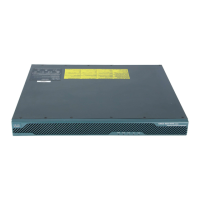Contents
xv
Cisco ASA 5500 Series Configuration Guide using ASDM
OL-20339-01
PART
4 Configuring IP Routing
CHAPTER
18 Information About Routing 18-1
Information About Routing 18-1
Switching 18-1
Path Determination 18-2
Supported Route Types 18-2
Static Versus Dynamic 18-2
Single-Path Versus Multipath 18-3
Flat Versus Hierarchical 18-3
Link-State Versus Distance Vector 18-3
How Routing Behaves Within the Adaptive Security Appliance 18-4
Egress Interface Selection Process 18-4
Next Hop Selection Process 18-4
Supported Internet Protocols for Routing 18-5
Information About the Routing Table 18-5
Displaying the Routing Table 18-5
How the Routing Table Is Populated 18-6
Backup Routes 18-7
How Forwarding Decisions are Made 18-7
Dynamic Routing and Failover 18-8
Information About IPv6 Support 18-8
Features that Support IPv6 18-9
IPv6-Enabled Commands 18-9
IPv6 Command Guidelines in Transparent Firewall Mode 18-10
Entering IPv6 Addresses in Commands 18-10
Disabling Proxy ARPs 18-11
CHAPTER
19 Configuring Static and Default Routes 19-1
Information About Static and Default Routes 19-1
Licensing Requirements for Static and Default Routes 19-2
Guidelines and Limitations 19-2
Configuring Static and Default Routes 19-2
Configuring a Static Route 19-3
Add/Edit a Static Route 19-3
Configuring Static Route Tracking 19-6
Deleting Static Routes 19-6
Configuring a Default Static Route 19-7

